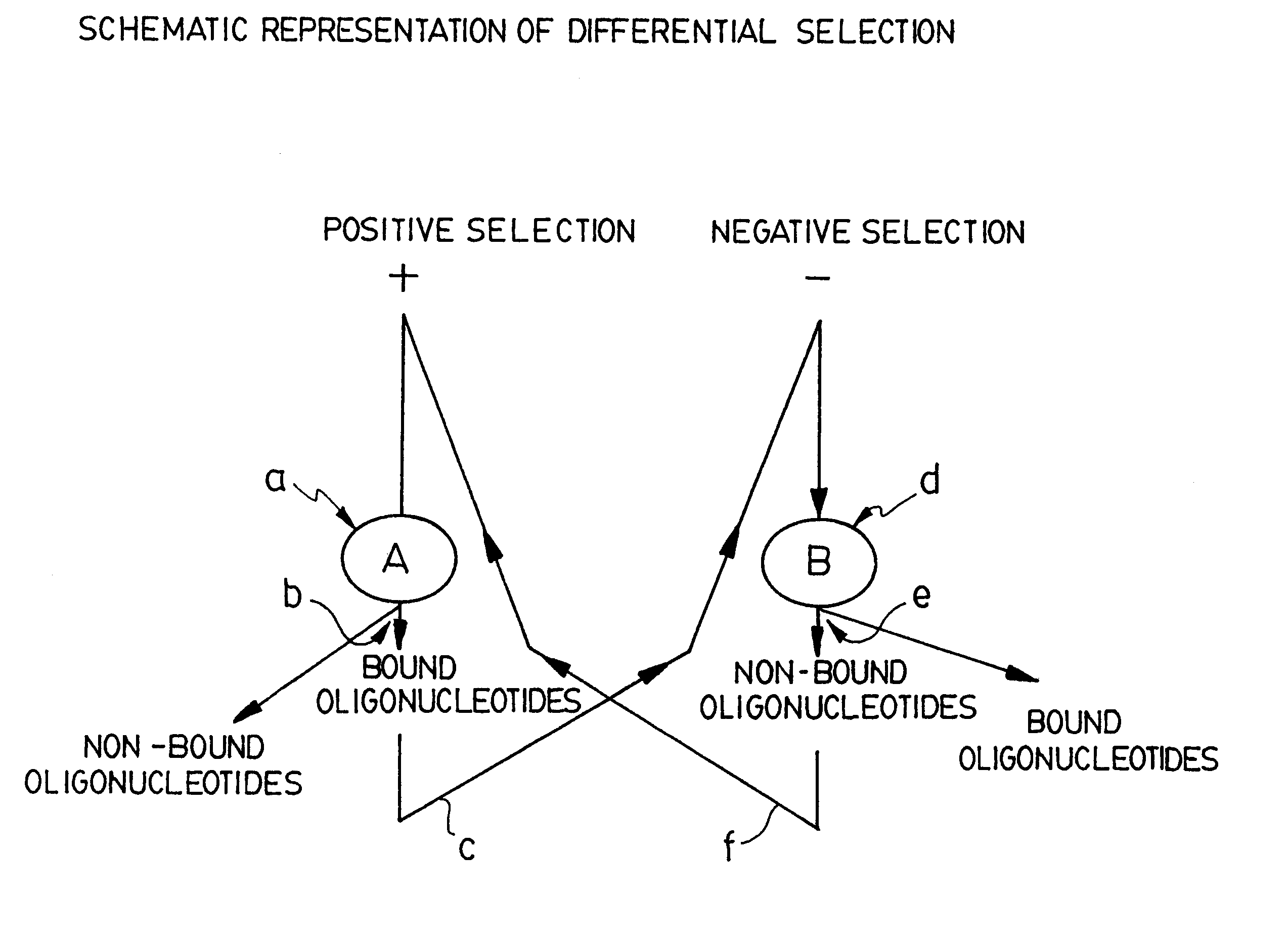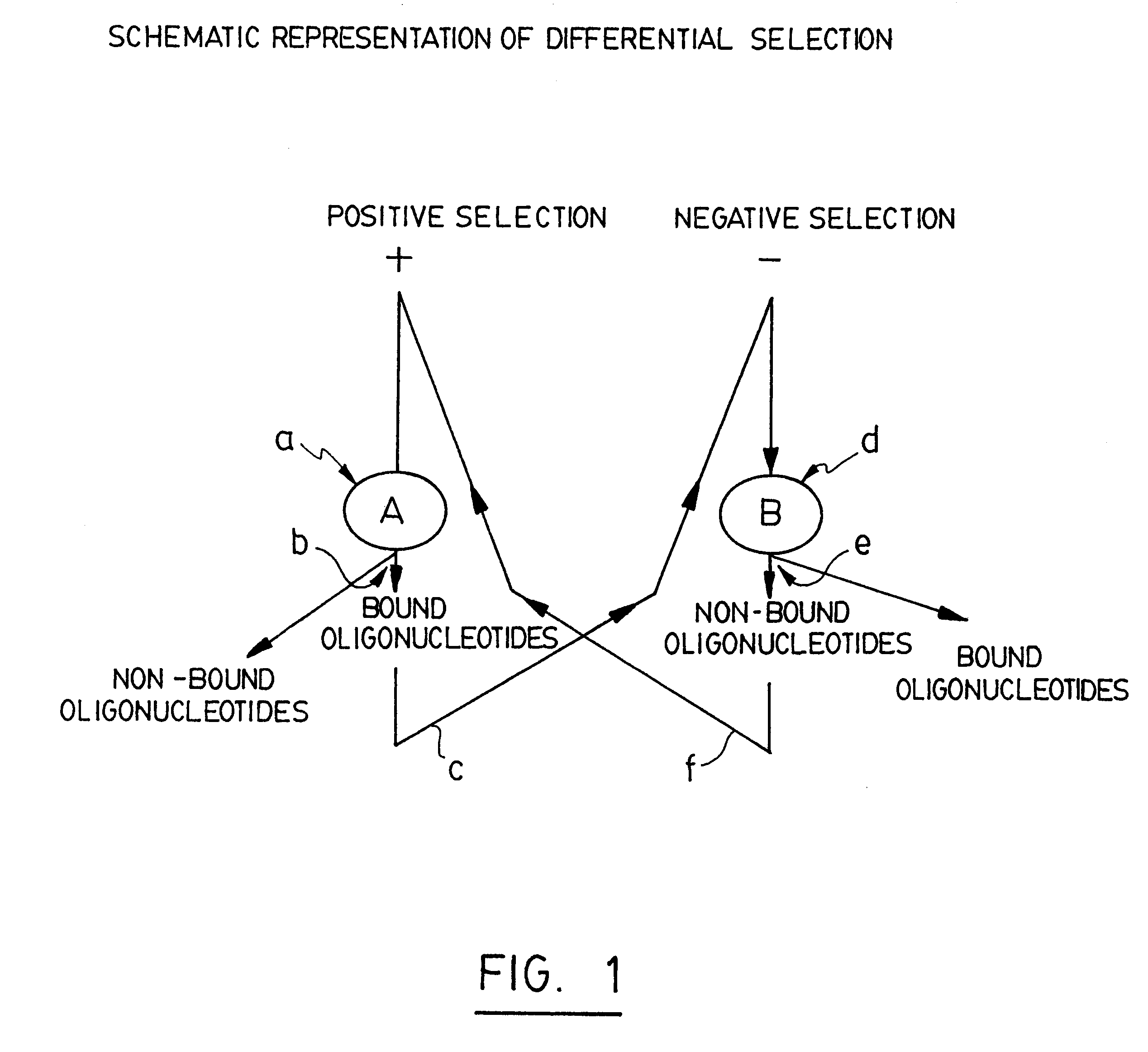Selective technique for rapid identification of proteins and genes and uses thereof
a technology of protein and gene identification, applied in the field of selective technique for rapid identification of proteins and genes, can solve the problems of change in protein activity, improper or even absence of protein function, over or under production of protein within cells, and limited to biological tissu
- Summary
- Abstract
- Description
- Claims
- Application Information
AI Technical Summary
Problems solved by technology
Method used
Image
Examples
example 2
Differential Binding Ability of Oligonucleotides-target Mixtures at Different Stages of the STRIPGEN Method
As stated above, in the positive rounds of selection of the STRIPGEN method the oligonucleotides are preferably used in a molar excess over protein extract A (usually we use 1 to 10 pmoles of oligonucleotides versus 0.2 ug of protein extract A). In contrast, during the negative rounds of selection, the ratio of protein extract B / oligonucleotides is preferably much higher relative to that used during positive selection (usually 0.1 pmole of oligonucleotides versus 2 to 5 ug of protein extract B). The Applicant found that a method including a negative selection immediately after the positive selection, without amplification, as suggested in U.S. Pat. No. 5,712,375 is not effective since that, after the first round of positive selection, the partitioned oligonucleotides with high affinity to extract A bind totally to extract B during the first round of negative selection. It is on...
example 3
Results After Nine Repetitive Rounds of the STRIPGEN Method
FIG. 4 illustrates nine rounds of repetitive positive selection against extract A and negative selection against extract B. The positive / negative selections were performed as described herein before. The late selected A+B- oligonucleotides were then incubated with 0.1 .mu.g of nuclear extract A (lane A) or with 0.1 .mu.g of nuclear extract B (lane B). As shown on the autoradiogram, the band pointed up by the upper arrow shows that the late rounds of A+B- selected oligonucleotides have a high affinity and specificity only for protein(s) from the extract A but not to proteins from the extract B since oligonucleotide-protein complexes are seen only with extract A (lane A) but not with extract B (lane B). This differential pattern obtained after the ninth round of positive / negative selections is also much stronger as compared with only three rounds (lanes 2-3, FIG. 3).
PUM
| Property | Measurement | Unit |
|---|---|---|
| pH | aaaaa | aaaaa |
| volumes | aaaaa | aaaaa |
| volume | aaaaa | aaaaa |
Abstract
Description
Claims
Application Information
 Login to View More
Login to View More - R&D
- Intellectual Property
- Life Sciences
- Materials
- Tech Scout
- Unparalleled Data Quality
- Higher Quality Content
- 60% Fewer Hallucinations
Browse by: Latest US Patents, China's latest patents, Technical Efficacy Thesaurus, Application Domain, Technology Topic, Popular Technical Reports.
© 2025 PatSnap. All rights reserved.Legal|Privacy policy|Modern Slavery Act Transparency Statement|Sitemap|About US| Contact US: help@patsnap.com


